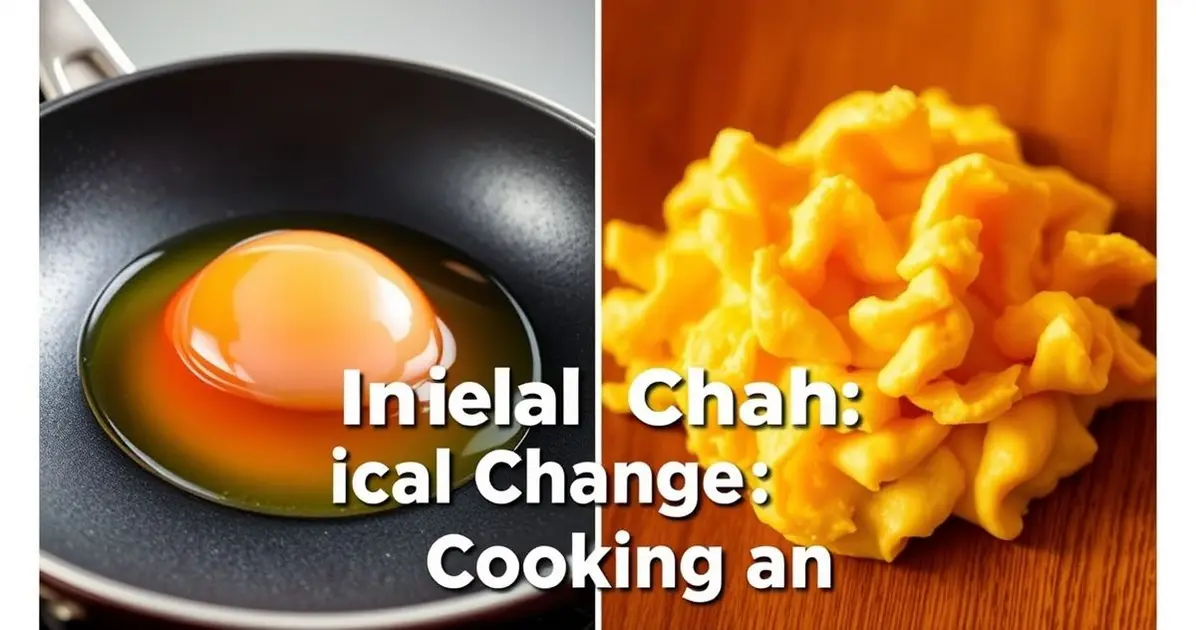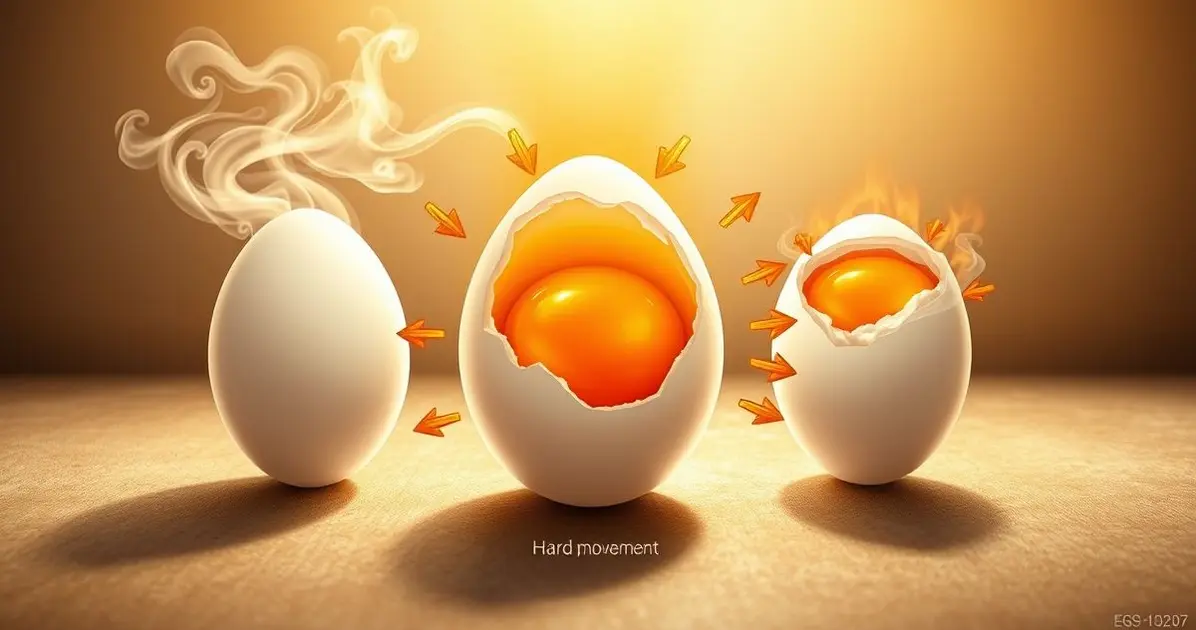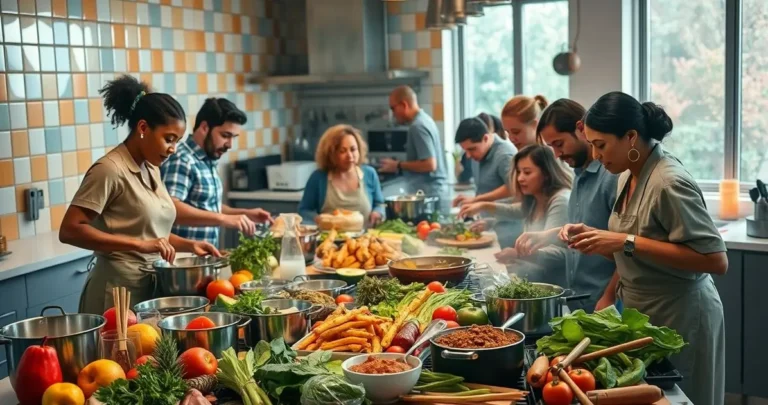Cooking an egg involves a series of chemical reactions that change its structure and properties. Understanding whether this process is a chemical change invites exploration into the transformations that occur.
Is cooking an egg a chemical change

When an egg is cooked, the proteins unravel and bond together, transforming its texture and appearance. This irreversible change is a classic example of a chemical transformation, illustrating the fundamental principles of chemistry in everyday cooking.
Understanding Chemical Change
Understanding chemical change is crucial for grasping the science behind cooking and many other processes in our daily lives. A chemical change occurs when substances combine or break apart to form new substances with different properties. This transformation is often accompanied by observable signs, such as color changes, temperature changes, gas production, or the formation of a precipitate.
One of the key characteristics of a chemical change is that it is usually irreversible. For instance, when you cook an egg, the proteins denature and coagulate, resulting in a solid structure that cannot revert to its original liquid form. This irreversibility is a hallmark of chemical changes, setting them apart from physical changes, where substances can often return to their original state, like melting ice turning back into water.
In the kitchen, many processes involve chemical changes. Baking bread, for example, involves the fermentation of yeast, which produces carbon dioxide gas, causing the dough to rise. Similarly, when you caramelize sugar, it undergoes a chemical transformation, changing color and flavor as it cooks.
Recognizing these chemical changes enhances our cooking skills and helps us appreciate the science behind our favorite recipes. By understanding the principles of chemical change, we can better control the cooking process, ensuring delicious results every time!
The Science of Cooking Eggs
The science of cooking eggs is a delightful journey into the world of chemistry and biology. Eggs are composed mainly of proteins and water, which play crucial roles in the cooking process.
When you apply heat to an egg, several fascinating reactions occur that transform its texture and flavor.
First up, let’s talk about the proteins. The egg white, or albumen, contains proteins like ovalbumin and ovotransferrin. When heated, these proteins undergo denaturation, a process where they unfold and lose their original structure. This unfolding allows the proteins to interact with each other, forming a network that traps water and air, resulting in the firm texture we associate with cooked eggs.
As the temperature rises, the proteins continue to coagulate, solidifying the egg from its original liquid state. The yolk, rich in fats and proteins, also undergoes similar transformations. The heat causes the fats to melt and the proteins to set, adding richness and flavor to the dish. It’s this combination of protein and fat that gives cooked eggs their unique taste and creamy texture.
Temperature control is vital in this process. Cooking eggs too quickly or at too high a temperature can lead to overcooking, resulting in a rubbery texture and a greenish hue around the yolk. On the flip side, cooking them gently allows for a tender and flavorful result. Understanding this science empowers home cooks to create perfect eggs, whether scrambled, poached, or fried.
In essence, cooking eggs is not just about heat; it’s about the intricate dance of proteins and fats, transforming simple ingredients into a delicious culinary experience!

Irreversible vs. Reversible Changes
When exploring the concepts of irreversible and reversible changes, it’s essential to understand how these processes differ, especially in the context of cooking. In simple terms, a reversible change is one where the original substance can be recovered after the change occurs, while an irreversible change results in new substances that cannot return to their original form.
Take, for instance, the melting of ice. When ice melts into water, it’s a reversible change; if you cool the water down, it will freeze back into ice. This process can happen repeatedly without any change to the chemical composition of water. However, when you cook an egg, you enter the realm of irreversible changes. The proteins in the egg denature and coagulate when heated, leading to a solid structure that cannot revert to the raw state.
In cooking, many processes illustrate irreversible changes.
For example, baking bread involves yeast fermentation, which produces carbon dioxide gas, causing the dough to rise. Once baked, the bread cannot return to its original dough form. Similarly, caramelizing sugar transforms it into a new substance with distinct flavors and colors that cannot revert back to plain sugar.
Understanding the difference between these two types of changes is crucial for anyone in the kitchen. It helps in predicting the outcomes of cooking processes and in knowing which methods can be adjusted or reversed. By recognizing irreversible changes, cooks can make informed decisions about how to prepare and present their dishes, ensuring delicious results every time!
Everyday Examples of Chemical Reactions
Chemical reactions are all around us, and many of them occur in our kitchens without us even realizing it. Understanding these everyday examples can deepen our appreciation for cooking and the science behind it.
One of the most common examples is baking. When you mix flour, sugar, eggs, and baking powder, you’re initiating a series of chemical reactions. The baking powder releases carbon dioxide gas when it heats up, causing the dough to rise and creating that fluffy texture we love in cakes and muffins. This transformation is irreversible, as the raw ingredients become a completely new substance once baked.
Another great example is the process of fermentation. When you make yogurt, live bacteria are added to milk. These bacteria consume lactose and produce lactic acid, which thickens the milk and gives yogurt its tangy flavor. This is a classic chemical reaction that not only changes the texture and taste of the milk but also introduces beneficial probiotics.
Let’s not forget about the Maillard reaction
which occurs when you sear meat or toast bread. This reaction between amino acids and reducing sugars creates complex flavors and browning, enhancing the taste of your dishes. It’s this chemical change that gives grilled steak its delicious crust and roasted coffee its rich aroma.
Lastly, consider the transformation of fruits when they ripen. As fruits mature, they undergo chemical changes that alter their color, texture, and flavor. For instance, green bananas turn yellow as starches convert to sugars, making them sweeter and more palatable. This process is irreversible, as the fruit cannot revert to its unripe state.
By recognizing these everyday examples of chemical reactions, we can better understand the science behind our cooking and appreciate the transformations that occur in our favorite dishes!
Conclusion
In summary, the exploration of whether cooking an egg is a chemical change reveals a fascinating interplay of science and culinary art.
Throughout this discussion, we’ve uncovered the intricate processes that occur when heat is applied to eggs, leading to irreversible transformations in their structure and properties.
By understanding the science of cooking eggs, we gain insight into the broader concepts of chemical changes, including the differences between irreversible and reversible processes.
We’ve also highlighted everyday examples of chemical reactions that occur in our kitchens, from baking to fermentation, showcasing how these transformations enhance our cooking experiences.
Recognizing these changes not only deepens our appreciation for the food we prepare but also empowers us to make informed decisions in the kitchen.
So, the next time you crack an egg into a pan, remember that you’re not just cooking; you’re engaging in a chemical process that transforms your ingredients into something delicious.
Embrace the science behind cooking, and let it inspire your culinary adventures!
FAQ – Frequently Asked Questions about Cooking and Chemical Changes
Is cooking an egg a chemical change?
Yes, cooking an egg is a chemical change because it transforms the proteins irreversibly.
What happens to the proteins in an egg when cooked?
The proteins denature and coagulate, changing from a liquid to a solid state.
What is the difference between a reversible and an irreversible change?
Reversible changes can return to their original state, while irreversible changes create new substances that cannot revert.
Can you give an example of a reversible change in cooking?
Melting ice into water is a reversible change; it can freeze back into ice.
What is the Maillard reaction?
The Maillard reaction occurs when heat causes amino acids and sugars to react, creating complex flavors and browning in cooked foods.
How does fermentation work in cooking?
Fermentation involves bacteria consuming sugars and producing acids, transforming ingredients like milk into yogurt.
See more
Discover plenty of easy and delicious recipes you can make at home, from hearty dinners to indulgent desserts and wholesome breakfasts.




